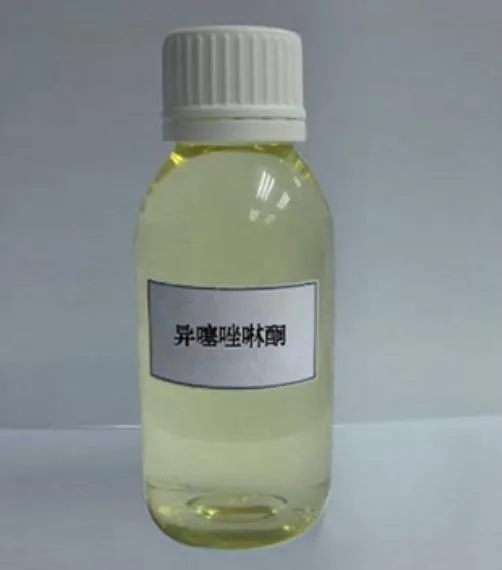Isothiazolinones: A Versatile Antimicrobial Class with Industrial Power and Regulatory Challenges
In modern industry, preventing microbial contamination is not just a matter of hygiene—it’s essential to product performance, shelf life, and safety. This is especially true in water-based systems, cosmetics, coatings, adhesives, and industrial process fluids. One of the most widely used families of biocidal agents today is isothiazolinones—a group of synthetic compounds known for their powerful and broad-spectrum antimicrobial properties.
Among these, chloromethyl isothiazolinone (often found in CMIT/MIT blends) stands out for its high efficacy. But with increasing regulatory pressure and growing demand for eco-friendly ingredients, companies now face the challenge of balancing performance, cost, and compliance when using isothiazolinone-based preservatives.
In this article, we’ll explore how isothiazolinones work, common isothiazolinone uses, how isothiazolinone price fluctuates, and what trends to watch in future formulations.

What Are Isothiazolinones?
Isothiazolinones are heterocyclic chemical compounds containing sulfur and nitrogen atoms in a five-membered ring. They are highly effective against bacteria, fungi, and algae, even at very low concentrations. Their mode of action involves disrupting microbial enzymes by reacting with thiol groups (-SH), which leads to cell death.
Their high performance and chemical compatibility have made them a mainstay in multiple industrial and consumer sectors. However, some types of isothiazolinones have also been associated with skin sensitization and allergic reactions, prompting stricter regulations and concentration limits—especially in personal care products.
Key Types of Isothiazolinones
There are several common isothiazolinone compounds used across industries, each with slightly different properties:
1. Chloromethyl Isothiazolinone (CMIT)
Often blended with methyl isothiazolinone (MIT) in a 3:1 ratio.
This combination is sold under trade names like Kathon™ CG.
Highly effective at low doses, but classified as a sensitizer.
Mainly used in industrial applications and rinse-off personal care products.
2. Methyl Isothiazolinone (MIT)
Less potent than CMIT but with a better toxicological profile.
Frequently used in shampoos, detergents, and household cleaners.
3. Benzisothiazolinone (BIT)
Common in paints, coatings, and adhesives.
Offers good thermal stability and a lower risk of allergic response.
4. Octylisothiazolinone (OIT)
Used for fungal resistance, particularly in wood preservatives and marine coatings.
5. Dichlorooctylisothiazolinone (DCOIT)
Applied in antifouling paints and cooling systems.
Known for its long-lasting effect and high water stability.
Isothiazolinone Uses in Modern Industry
Isothiazolinone uses cover a wide spectrum of sectors due to their ability to prevent microbial growth in water-heavy environments:
• Industrial Water Treatment
Used in cooling towers, paper mills, oilfield injection water, and reverse osmosis systems.
Controls biofilm and microbial-induced corrosion.
• Paints and Coatings
Prevents bacterial degradation of water-based emulsions.
Enhances shelf life and product stability in packaging.
• Cosmetics and Personal Care
Included in rinse-off products like shampoos and body washes.
Not allowed in leave-on products in the EU due to sensitization risk.
• Cleaning Products
Used in hard surface cleaners, laundry detergents, and wipes.
• Adhesives and Sealants
Preserves formulation quality in packaging and during storage.
• Leather and Textile Processing
Prevents microbial damage in raw material storage and wet processing.
Isothiazolinone Price Overview
The isothiazolinone price is influenced by various factors such as raw material availability, environmental regulations, supplier location, concentration levels, and packaging requirements.
Here is a rough market price range (based on current industry estimates):
|
Compound |
Typical Price (USD/kg) |
|
CMIT/MIT (14% active blend) |
$3.00 – $7.00 |
|
BIT (20% aqueous solution) |
$6.00 – $12.00 |
|
OIT (45% concentrate) |
$9.00 – $15.00 |
|
DCOIT (95% solid) |
$25.00 – $40.00 |
Bulk pricing and long-term contracts can significantly reduce costs. However, compliance with REACH, EPA, and other regulatory bodies may add costs related to documentation, testing, and reformulation.
Regulatory and Safety Considerations
Isothiazolinones are under increasing scrutiny due to concerns about skin sensitization. In particular:
CMIT/MIT is banned in leave-on cosmetics in the EU.
MIT is restricted to concentrations of 0.0015% in rinse-off products.
GHS (Globally Harmonized System) classifies many isothiazolinones as skin sensitizers and requires hazard labeling.
Formulators must declare preservatives on product labels above specific thresholds.
Environmental agencies also monitor these biocides due to aquatic toxicity, pushing the industry toward lower-use levels or safer alternatives.
Isothiazolinones FAQs
Q1: What is the function of chloromethyl isothiazolinone in formulations?
A: It serves as a powerful preservative to prevent microbial contamination in water-based products, extending shelf life and ensuring safety.
Q2: Why are isothiazolinones restricted in cosmetics?
A: Due to their potential to cause skin allergies, regulatory bodies have limited or banned their use in leave-on personal care products, particularly in Europe.
Q3: How long do isothiazolinones remain active in formulations?
A: When stored correctly, they can remain stable and effective for 1–2 years. In use, their activity depends on pH, temperature, and system composition.
Q4: Are there safer alternatives to isothiazolinones?
A: Yes, such as organic acids (e.g., benzoic acid, sorbic acid), silver-based antimicrobials, or natural extracts. However, few match isothiazolinones’ performance at low concentrations.
Q5: Where can I find reliable suppliers for isothiazolinones?
A: Major chemical distributors, global biocide manufacturers, or specialty water treatment suppliers often carry various grades and concentrations tailored to industry needs.
-
Understanding Polycarboxylic Acids: Properties, Applications, and Future PotentialસમાચારJul.28,2025
-
Scale Inhibitor Explained: How to Protect Your System from Limescale and Hard Water DamageસમાચારJul.28,2025
-
Scale and Corrosion Inhibitors: Essential Chemicals for Industrial Water System ProtectionસમાચારJul.28,2025
-
Polyaspartic Acid: A Biodegradable Polymer for Sustainable ChemistryસમાચારJul.28,2025
-
Isothiazolinones: A Versatile Antimicrobial Class with Industrial Power and Regulatory ChallengesસમાચારJul.28,2025
-
A Deep Dive into 2-Phosphonobutane-1,2,4-Tricarboxylic Acid (PBTC)સમાચારJul.28,2025





